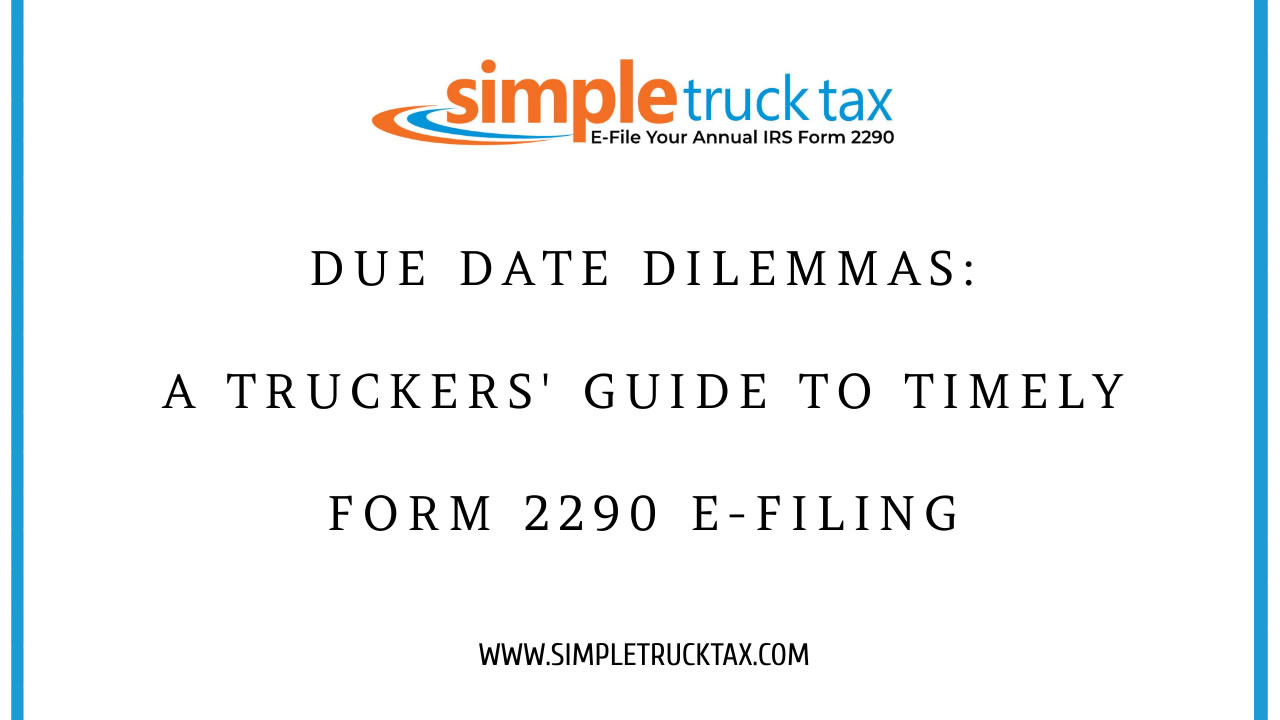
Due Date Dilemmas: A Truckers' Guide to Timely Form 2290 E-Filing
As a trucker, navigating the intricate world of taxes can be as difficult as moving through rush-hour traffic. However, the most critical part of your tax responsibilities is Filing Form 2290 (Heavy Highway Vehicle Use Tax Return). Nonetheless, sometimes meeting the deadline feels like racing against time at a weigh station. In this guide we will discuss key issues in Form 2290 e-filing and give you tips on how to beat these deadlines without breaking sweat.
Understanding Form 2290
Before we go into details of the deadlines it is important to understand some basics about form 2290. This IRS document is used for reporting and paying the Heavy Highway Vehicle Use Tax, which applies to trucks weighting above 55,000 pounds that run on public highways. It’s an annual obligation because the tax amount varies depending on factors such as vehicle weight and mileage.
The Importance of Timely Filing
Missing out on filing form 2290 by due date will attract penalties and unnecessary headaches. The standard filing period for the tax year starts from July 1st up to June30th of next year. Nevertheless, the due date for filing and payment of this tax depends on when your automobile was first used within its taxable period. Understanding such deadlines will help in avoiding penalties and staying IRS compliant.
Key Deadlines to Remember
- First Used Month: For instance if your vehicle was first used in July on road then you must file form 2290 along with payment before August31st; in case you are using it later during that tax year then it should also be submitted not later than month end following that calendar month which had the initial use.
- Annual Renewal:Most truckers have a deadline date for annual renewal set at August31st meaning they should file their forms with number 2290 taxes before this day ends so as not to get penalized.
- Prorated Deadlines: When you purchase a vehicle later in the tax year, the deadline for filing and paying the tax is prorated according to the first use month. If you bought your vehicle in December for example, you would have until January 31st of the next year to file.
Strategies for Timely E-Filing
Now that you know what these deadlines are; here are some strategies to ensure timely e-filing of Form 2290:
- Stay Organized: Keep good records about when your vehicle was first used on road and other related information so that you will not be confused during tax return preparation time.
- Set Reminders: Make sure you mark down these deadlines on your calendar or put notifications into your phone or computer so that you can remember them without fail.
- Use E-Filing Services: You may want to consider using IRS approved e-filing services or software in order to simplify this process. These platforms come with additional benefits such as automated calculations and reminders.
- File Early: Don’t wait until last minute to file your form 2290s. By doing this, it will give you enough time to address any issues that may arise and avoid stressing yourself out from running right before a deadline approaches.
Navigating the Form 2290 E-Filing Deadlines doesn't have to be daunting task. By understanding some key dates and applying tips outlined by our team herein, successful submission can be ensured thus no fine will be imposed on anyone unnecessarily. Remember; staying organized and proactive is essential while ensuring compliance with IRS regulations throughout as one focuses on hitting the wide open road ahead.
Note: For more information, visit IRS website